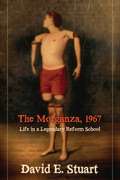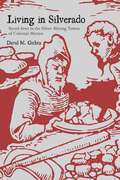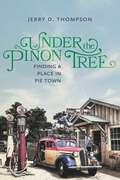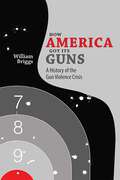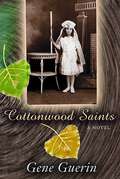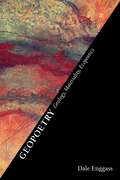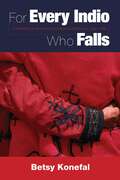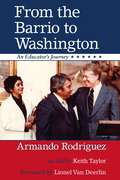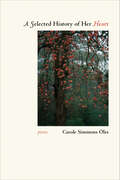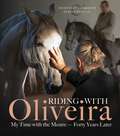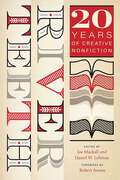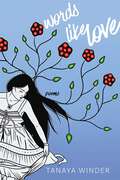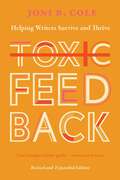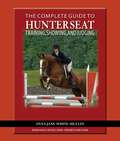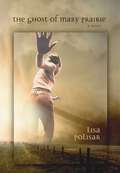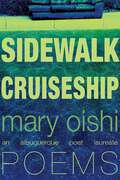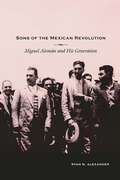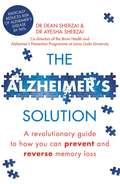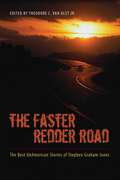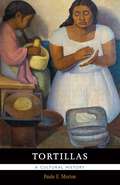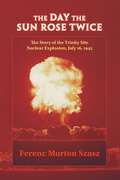- Table View
- List View
The Morganza, 1967: Life in a Legendary Reform School
by David E. StuartFresh out of college, David Stuart put off graduate school to take a job close to his West Virginia home as a counselor at the Youth Development Center at Canonsburg, Pennsylvania. Known locally as the Morganza, the facility was founded in the nineteenth century as a farm for orphaned boys. By the 1960s, the Morganza had long been burdened with a sinister reputation when it was converted into a detention center for Allegheny County youth convicted of crimes ranging from petty theft to armed robbery, rape, and murder. Reporting for duty during the racially turbulent and riot-torn summer of 1967, Stuart describes the life of students and staff in what was, in reality, a youth prison camp. Confronted with the glaring shortcomings of the reform school's methods of rehabilitation, Stuart irritated the bureaucracy, advocating for detainees whose only crimes were a lack of education and belonging to the wrong race or economic class. He confronted an establishment that refused to distinguish between hardened criminals and those who would benefit from actual reform. In The Morganza, 1967 Stuart offers a brutally honest--at times touching--insider's view of a juvenile justice system that was badly in need of fixing.
Living in Silverado: Secret Jews in the Silver Mining Towns of Colonial Mexico
by David M. GitlitzIn this thoroughly researched work, David M. Gitlitz traces the lives and fortunes of three clusters of sixteenth-century crypto-Jews in Mexico&’s silver mining towns. Previous studies of sixteenth-century Mexican crypto-Jews focus on the merchant community centered in Mexico City, but here Gitlitz looks beyond Mexico&’s major population center to explore how clandestine religious communities were established in the reales, the hinterland mining camps, and how they differed from those of the capital in their struggles to retain their Jewish identity in a world dominated economically by silver and religiously by the Catholic Church.In Living in Silverado Gitlitz paints an unusually vivid portrait of the lives of Mexico&’s early settlers. Unlike traditional scholarship that has focused mainly on macro issues of the silver boom, Gitlitz closely analyzes the complex workings of the haciendas that mined and refined silver, and in doing so he provides a wonderfully detailed sense of the daily experiences of Mexico&’s early secret Jews.
Under the Piñon Tree: Finding a Place in Pie Town
by Jerry D. ThompsonWinner of the Historical Society of New Mexico Fabiola Cabeza de Vaca Award Raised in Catron County around Pie Town, Jerry D. Thompson is a well-known Southwestern and Civil War historian. Part regional history, part family history, and part childhood memories, Under the Piñon Tree traces the lives of Catron County residents and explores how the area has grown and changed since the Depression and World War II, when Thompson&’s family first homesteaded the area. Those interested in storytelling and history will enjoy this richly detailed account. Under the Piñon Tree is a must-read for anyone interested in New Mexico and the Southwest.
How America Got Its Guns: A History of the Gun Violence Crisis
by William BriggsIn the United States more than thirty thousand deaths each year can be attributed to firearms. This book on the history of guns in America examines the Second Amendment and the laws and court cases it has spawned. The author&’s thorough and objective account shows the complexities of the issue, which are so often reduced to bumper-sticker slogans, and suggests ways in which gun violence in this country can be reduced.Briggs profiles not only protagonists in the national gun debate but also ordinary people, showing the ways guns have become part of the lives of many Americans. Among them are gays and lesbians, women, competitive trapshooters, people in the gun-rights and gun-control trenches, the NRA&’s first female president, and the most successful gunsmith in American history.Balanced and painstakingly unbiased, Briggs&’s account provides the background needed to follow gun politics in America and to understand the gun culture in which we are likely to live for the foreseeable future.
Cottonwood Saints
by Gene GuerinSpanning the twentieth century, Cottonwood Saints chronicles the lives of a New Mexico woman and her son, Michael. Margarita Juana Galvan was born in a lumber camp in 1913 and is brought up like a little princess in her grandparents' hacienda. In contrast, Margarita's adult life is spent in depression-ridden Las Vegas, New Mexico. Told through Michael, Margarita's story embodies the challenges faced by an intelligent, independent-minded girl maturing in a man's world. Margarita and her family's lives intersect with the prominent events of the century: the influenza pandemic of 1918, the rise of the Ku Klux Klan, the Great Depression, and World War II. Based on the life of Guerin's mother, Cottonwood Saints connects the lives of the poorest citizens of New Mexico to the local power structure. The story ends after Michael, who became a priest, must leave his order in disgrace, and with the burial of Margarita in 1991. Cottonwood Saints is a moving family saga, rich in lore and personality and the marvelous culture of New Mexico. Margarita Juana is a powerful woman, a survivor who perseveres against all odds, determined to hold things together. Her story, about the extreme courage of ordinary people, is sad and true and very inspiring.--John Nichols, author of The Milagro Beanfield WarThe lyrical voice will draw you in, but it's Margarita Juana's twentieth-century--spanning story that will keep you reading. Cottonwood Saints paints a northern New Mexico on the brink of change its characters both embrace and fear. Cottonwood Saints is quietly lovely, heartbreakingly real.--Lisa Lenard-Cook, author of Dissonance and Coyote MorningWith poetic descriptions of countryside and towns struggling to be modern, we are taken through the late nineteenth century in Las Vegas, New Mexico, in its growing pains as a railroad town, the hardships of World War II both for those who participated in the Baatan march and those who stayed behind, to the contemporary period. Guerin has exactly captured a period from rural life to contemporary life, with all its disappointments and challenges.--Tey Diana Rebolledo, department of Spanish, University of New Mexico
Geopoetry: Geology, Materiality, Ecopoetics (Recencies Series: Research and Recovery in Twentieth-Century American Poetics)
by Dale EnggassAt its core, geopoetics proposes that a connection between language and geology has become a significant development in post–World War II poetics. In Geopoetry, Dale Enggass argues that certain literary works enact geologic processes, such as erosion and deposition, and thereby suggest that language itself is a geologic––and not a solely human-based––process. Elements of language extend past human control and open onto an inhuman dimension, which raises the question of how literary works approach the representation of nonhuman realms. Enggass examines the work of Clark Coolidge, Robert Smithson, Ed Dorn, Maggie O&’Sullivan, Jeremy Prynne, Jen Bervin, Christian Bök, and Steve McCaffery, and he finds that while many of these authors are not traditionally connected to ecocritical writing, their innovations are central to ecocritical concerns. In treating language as a geological material, these authors interrogate the boundary between human and nonhuman realms and offer a model for a complex literary engagement with the Anthropocene.
For Every Indio Who Falls: A History of Maya Activism in Guatemala, 1960-1990
by Betsy KonefalIn 1978, a Maya community queen stood on a stage to protest a massacre of indigenous campesinos at the hands of the Guatemalan state. She spoke graphically to the dead and to the living alike: Brothers of Panzós, your blood is in our throats!Given the context, her message might come as a surprise. A revolutionary insurgency in the late 1970s was being met by brutal state efforts to defeat it, efforts directed not only at the guerrilla armies but also at reform movements of all kinds. Yet the young woman was just one of many Mayas across the highlands voicing demands for change. Over the course of the 1970s, Mayas argued for economic, cultural, and political justice for the indigenous pueblo. Many became radicalized by state violence against Maya communities that soon reached the level of genocide.Scholars have disagreed about Maya participation in Guatemala's civil war, and the development of oppositional activism by Mayas during the war is poorly understood. Betsy Konefal explores this history in detail, examining the roots and diversity of Maya organizing and its place in the unfolding conflict. She traces debates about ethnicity, class, and revolution, and examines how (some) Mayas became involved in opposition to a repressive state. She looks closely at the development of connections between cultural events like queen pageants and more radical demands for change, and follows the uneasy relationships that developed between Maya revolutionaries and their Ladino counterparts. Konefal makes it clear that activist Mayas were not bystanders in the transformations that preceded and accompanied Guatemala's civil war--activism by Mayas helped shape the war, and the war shaped Maya activism.
Horse Profiling: The Secret to Motivating Equine Athletes
by Kerry ThomasThe Thomas Herding Technique is thoroughly explained in this book that helps trainers of top equine athletes get them to perform their very best while living happy, contented lives. While following wild horse herds in Wyoming and Montana, independent researcher Kerry Thomas realized that what is inside the horse (emotional conformation) and not what is outside (how a horse is built, or its physical conformation) is what governs herd dynamics. He determined that this was the basis for everything horse: whatever role a horse plays in a human environment-whatever breed, sport, or job-the emotional conformation dictates, in large part, success or failure. Thomas identified a system of emotional profiling-the Thomas Herding Technique-that enables him to determine a horse's performance tendencies, and then began to develop ways in which horses can be mentally conditioned toward a given goal. The technique is already used by some leading racehorse training and breeding programs in the world, and this book explains this unique way of analyzing the psyche of the equine athlete for all horses, and particularly those in competitive careers where performance is a primary focus--
From the Barrio to Washington: An Educator's Journey
by Keith Taylor Armando RodriguezWhat would be the odds of a poor Mexican boy who migrated with his family to southern California in the 1920s rising through the ranks of the American education system to become the first Hispanic principal of a junior and senior high school in San Diego, the second Hispanic to be a college president in California, and to serve in the administrations of four U.S. presidents? Armando Rodriguez spoke no English when he first set foot in the United States and was just old enough to start school in a district with few Spanish-speaking teachers. But with parents who emphasized the importance of education and who taught him the value of hard work, Armando Rodriguez became fluent in English, received a doctorate in bilingual education, and was instrumental in developing the field of bilingual education while serving as Assistant Commissioner of Education for the nation. Rodriguez recalls his inspirational journey from a short child who was so dark he was nicknamed Shadow to being influential in shaping education on district, state, and national levels. Some still call him Shadow, though it is now spoken with respect and admiration for an immigrant who overcame many obstacles to become an instrument of change for his country.Armando Rodriguez offers the gift of his fascinating life in this timely and candid autobiography of a poor immigrant child who arrived speaking no English and climbed the entire staircase of the American dream to power in Washington.--Eleanor Holmes Norton
A Selected History of Her Heart: Poems (Mary Burritt Christiansen Poetry Series)
by Carole Simmons OlesTravel, blood, and transgression are the materials that art shapes in these poems. Carole Simmons Oles&’s work moves among physical, spiritual, and metaphorical frontiers where East meets West, where relationships are forged and broken, and where a woman can now process and reflect on the experiences that have shaped her life.
Give Your Horse a Chance
by Lt Col D'EndrodyMany masters of horsemanship have studied horses and riding over the last centuries, but few have given the subject greater consideration than Agoston d'Endrödy. In preparing this book, he gave considerable thought to the practical principles of riding and to the process of becoming a good rider. And he explains why horses perform more or less successfully according to whether they are mounted by a talented rider or by one of limited natural abilities. InGive Your Horse a Chance, his goal is to reduce the disparity between these two divisions of riders by carefully delineating the processes of good riding and training.The first part of the book explains the proper development of horse and rider so that both learn to enjoy their work. The latter part offers excellent, concise training advice for combined training and show jumping.
Riding with Oliveira
by Dominique BarbierThe true Mestre is a person who directs and changes your life. Renowned champion of classical equitation principles and bestselling author Dominique Barbier names the revered Portuguese equestrian Mestre Nuno Oliveira as his. &“Through great discipline, scholarly, serious inquiry and analysis, and a nonstop relentless passion, he formed his understanding of the Equestrian Art,&” says Barbier. &“As any student of Mestre Nuno Oliveira will know, he was anything but a simple man.&”Over several years Barbier had the unique opportunity to form an intimate relationship with Mestre Oliveira. In this deeply personal book Barbier chronicles their time together. Beginning in a tiny, dimly lit riding hall in Póvoa de Santo Adrião, Portugal, where seminal moments of Barbier's riding education dawned under the watchful eyes of many luminaries of the European riding elite, the book then explores what came later when Barbier studied with the Mestre in Avessada and traveled with him to Belgium. Barbier's recollections are complemented by those of three other equestrians who learned from the Mestre: Dany Lahaye, Bettina Drummond, and Luis Valença. The result is a remarkable and insightful retrospective of one of the most extraordinary horsemen of all time.
América invertida: An Anthology of Emerging Uruguayan Poets (Mary Burritt Christiansen Poetry Series)
by Jesse Lee KerchevalAmérica invertida introduces twenty-two Uruguayan poets under the age of forty to English-speaking audiences for the first time. Kercheval paired poets and translators to produce a rich volume based on a multicultural dialogue about poetry and the written word. América invertida presents Spanish poems and their English translations side by side to give readers an introduction to Uruguay&’s vibrant literary scene.
River Teeth: Twenty Years of Creative Nonfiction
by Joe Mackall Daniel W. LehmanNationally recognized River Teeth: A Journal of Nonfiction Narrative has published a host of new and significant voices in creative nonfiction—including essays, memoir, and literary journalism—since 1999. To celebrate twenty years of introducing talented new writers to readers and publishing great nonfiction, the founding editors, Joe Mackall and Daniel W. Lehman, have selected their all-time favorite essays published in River Teeth in this stunning collection. Essays include up-and-coming authors as well as luminaries such as Ann Hood, Lee Martin, Chris Offutt, Angela Morales, Brenda Miller, Judith Kitchen, Ted Kooser, and Andre Dubus III. River Teeth: Twenty Years of Creative Nonfiction further includes a thoughtful foreword by Robert Atwan that illuminates the importance, breadth, and reach of the journal and shows the diversity of nonfiction writing available in the twenty-first century. A trailblazing publication since its inception, River Teeth continues to share the important work of contemporary writers and will thrive for years to come.
Words Like Love: Poems
by Tanaya WinderTanaya Winder&’s Words Like Love sings the joys, glories, and laments of love. As an accomplished poet, Winder traverses the darkness in a quest to learn more about the most complex of subjects. With beauty and ease, she explores emotion and thought through the poems featured in this debut collection.
Toxic Feedback: Helping Writers Survive and Thrive, Revised and Expanded Edition
by Joni B. ColeFrom veteran teacher and acclaimed author Joni B. Cole comes a revised and expanded edition of her popular writing guide Toxic Feedback. Successful writers know that feedback is often the difference between writing and not writing, and between writing and writing well. But feedback mismanaged is more likely to leave the writer confused, intimidated, or even deflated. This book not only detoxifies the feedback process with humor, but it also shows writers and feedback providers how to make the most of this powerful resource at every stage of the writing and publishing process. This new edition includes a second preface, four new chapters, updates throughout the original material, and several additional exercises. Cole also includes new and previous interviews with authors such as Khaled Hosseini, Juan Morales, Grace Paley, Jodi Picoult, and Matthew Salesses. Toxic Feedback remains essential reading for all writers, critique groups, MFA programs, and teachers of writing at every level.
Complete Guide to Hunter Seat Training, Showing, and Judging
by Anna Jane White-MullinThe USEF and USPC have both listed this title as recommended reading.Never before has such a complete text on the American hunt seat and equitation disciplines been compiled! Based on Anna Jane White-Mullin&’s now out–of–print bestsellerWinningand chock full of gorgeous, full–color photographs taken at Beacon Hill Show Stables owned by Stacia Madden,The Complete Guide to Hunter Seat Training, Showing, and Judgingprovides every aspiring equestrian the means for achieving greatness in the show ring.Beginning with a comprehensive overview of the basic principles of horsemanship—recently re–emphasized as compulsory by such luminaries of the sport as George Morris— and progressing through essential schooling exercises in the development of the hunter or equitation mount, as well as advanced concepts applicable to upper–level competition, Part One lays the amateur&’s riding and training foundation.You&’ll find:Discussion of collection and lengthening—long, medium, and short frames.Flatwork for improving the basic gaits—cadence, pace, and transitions.Training and showing tips for USEF Tests 1–19—patterns and how to prepare for them.Introduction to hunter and equitation jump courses—basic, intermediate, and advanced.As an added bonus, the education of the rider is made complete with the inclusion of White–Mullin&’s famous text on judging hunters and equitation. Offering a complete discussion of the USEF rules, requirements, and tests, the second part of the book explains what judges look for and the training methods necessary to achieve the desired results.
The Ghost of Mary Prairie
by Lisa PolisarIt's 1961, Grady, Oklahoma, population 103. Fifteen-year-old Jacob Leeds lives in a modest house on Hooper Circle. His world includes a wily sister, provincial parents, a grandfather named Woody, and an obsession with superheroes. Peel back one layer, though, and find a very different Hooper Circle--one teeming with lies, a family cover-up, and a secret that will change Jake forever.The summer of 1961 begins with a teenage initiation rite for Jake, delivered by his best friend, Mikey Savage: Initiation into Manhood--sleep on bare ground in the old baseball diamond. No sleeping bag, no shoes, no blanket. How difficult could it be?Pirate songs and funny stories accompany him in the darkness, until he hears the first of the screams. As he approaches the sound, he sees an apparition of a young woman, brutally beaten. He tries to run away, but finds he's running toward her. When Jake tells Mikey the story, he learns the legend of Mary McCann--a murdered Grady girl who to this day haunts the Oklahoma prairie in search of her killer. For Jake, this sighting marks the end of his childhood and the beginning of his quest to find the truth of her story.During a beastly-hot Oklahoma summer, on a hard-scrabble farm, Jake Leeds makes the emotional journey from easy boyhood to complicated adolescence when he uncovers a mystery that points to shattered truths and stunning secrets. Lisa Polisar's moving story and elegant prose bring vitality and wonder to an ages-old theme, turning The Ghost of Mary Prairie into a contemporary masterpiece.--Pari Noskin Taichert, two-time Agatha Award finalist
Sidewalk Cruiseship: Poems (Albuquerque Poet Laureate Series)
by Mary OishiWritten by the pandemic poet laureate of Albuquerque, Sidewalk Cruiseship draws on Oishi's remarkable ability to illustrate the world around her and the people in it. Separated into eleven short sections by traditional Japanese tankas, the poems in Oishi's newest collection take on the macro and the micro. They respond to the pandemic, the war in Ukraine, and the contentious political climate as they draw readers in to witness intimate moments of people and scenes within Oishi's beloved city of Albuquerque. The poems explore such themes as mental illness, the joys and sorrows of motherhood, what it is to be a woman in the world, and aging and death. Readers will come away with a better sense of Albuquerque and its inhabitants and will get an intimate look at one of its most passionate citizens--a Japanese American longtime justice activist and mentor for queer youth who embraces the best and worst Albuquerque has to offer. Throughout it all, she reminds us that the best response we can offer is love, even in the face of adversity.
The Future of Indian and Federal Reserved Water Rights: The Winters Centennial
by Barbara Cosens Judith V. RoysterOn January 6, 1908, the Supreme Court ruled that when land is set aside for the use of Indian tribes, that reservation of land includes reserved water rights. The Winters Doctrine, as it has come to be known, is now a fundamental principle of both federal Indian law and water law and has expanded beyond Indian reservations to include all federal reservations of land. Ordinarily, there would not be much to say about a one hundred-year-old Supreme Court case. But while its central conclusion that a claim to water was reserved when the land was reserved for Indians represents a commitment to justice, the exact nature of that commitment-its legal basis, scope, implications for non-Indian water rights holders, the purposes for and quantities of water reserved, the geographic nexus between the land and the water reserved, and many other details of practical consequence-has been, and continues to be, litigated and negotiated. In this detailed collection of essays, lawyers, historians, and tribal leaders explore the nuances of these issues and legacies.
Sons of the Mexican Revolution: Miguel Alemán and His Generation (Diálogos Series)
by Ryan M. AlexanderThe 1946 Mexican presidential election signaled the ascent of a new generation of cosmopolitan civilian government officials, led by the magnetic lawyer Miguel Alemán. Supporters hailed them as modernizing visionaries whose policies laid the foundation for unprecedented economic growth, while critics decried the administration&’s toleration of rampant corruption, hostility to organized labor, and indifference to the rural poor. Setting aside these extremes of opinion in favor of a more balanced analysis, Sons of the Mexican Revolution traces the socialization of this ruling generation&’s members, from their earliest education through their rise to national prominence. Using a wide array of new archival sources, the author demonstrates that the transformative political decisions made by these men represented both their collective values as a generation and their effort to adapt those values to the realities of the Cold War.
The Alzheimer's Solution: A revolutionary guide to how you can prevent and reverse memory loss
by Dr. Dean Sherzai Dr. Ayesha SherzaiTHE HIGHLY SUCCESSFUL, PROVEN PROGRAMME FOR REVERSING THE SYMPTOMS OF ALZHEIMER'S DISEASE Alzheimer's Disease affects over 47 million people worldwide but 90 per cent of cases can be prevented. Based on the largest clinical study to date, The Alzheimer's Solution, by leading neurologists and Alzheimer's specialists Drs Dean and Ayesha Sherzai, provides the essential practical tools you and your family need to reverse the symptoms and prevent cognitive decline. Alzheimer's disease isn't a genetic inevitability and a diagnosis doesn&’t need to spell the end. Ninety per cent of us can avoid getting it and for the 10 per cent with strong genetic risk, the disease can be delayed by 10 to 15 years. This is based on the remarkable results Dr Dean Sherzai and Dr Ayesha Sherzai have seen in their own clinic. This much-needed revolutionary book provides: *The groundbreaking and successful programme for the treatment of Alzheimer's *A practical 5-part plan for reversing and preventing Alzheimer's, covering food, sleep, exercise, stress-management and activities that keep your brain healthy *A questionnaire for assessing your risk level and daily guides for optimising your brain's health *Delicious and simple brain-healthy recipes for you and the family to enjoy Praise for The Alzheimer's Solution: 'The Sherzais' research is changing the landscape of neurodegenerative diseases as well as the outcomes for thousands of patients.' Dr Keith Black, Chairman of the Neurosurgery Department and Director of the Maxine Dunitz Neurological Institute, Cedars-Sinai Medical Center 'A very important book.' Dr Dilip Jeste, Distinguished Professor of Psychiatry and Neurosciences, University of California, San Diego School of Medicine'The Alzheimer&’s Solution supplies everything you need to know about the prevention of this disease' Dr Joel Fuhrman, New York Times best-selling author of Super Immunity, Eat to Live and The End of Diabetes, President, Nutritional Research Foundation 'This [is a] thorough, thoughtful, empowering, and timely book…Every family should own, and apply, The Alzheimer&’s Solution.'Dr David Katz, founding director of Yale University's Yale-Griffin Prevention Research Center, founder and president of the True Health Initiative, and author of Disease-Proof
The Faster Redder Road: The Best UnAmerican Stories of Stephen Graham Jones
by Stephen Graham JonesThis collection showcases the best writings of Stephen Graham Jones, whose career is developing rapidly from the noir underground to the mainstream. The Faster Redder Road features excerpts from Jones&’s novels—including The Last Final Girl, The Fast Red Road: A Plainsong, Not for Nothing, and The Gospel of Z—and short stories, some never before published in book form. Examining Jones&’s contributions to American literature as well as noir, Theodore C. Van Alst Jr.&’s introduction puts Jones on the literary map.
Tortillas: A Cultural History
by Paula E. Morton&“The ordinary tortilla was an extraordinary bond between the human and divine. . . . From birthdays to religious ceremonies, the people of Mesoamerica commemorated important events with tortillas. One Maya tribe even buried their dead with tortillas so that the dogs eaten as dinner during life would not bite the deceased in revenge.&”—from Tortillas: A Cultural HistoryFor centuries tortillas have remained a staple of the Mexican diet, but the rich significance of this unleavened flatbread stretches far beyond food. Today the tortilla crosses cultures and borders as part of an international network of people, customs, and culinary traditions.In this entertaining and informative account Paula E. Morton surveys the history of the tortilla from its roots in ancient Mesoamerica to the cross-cultural global tortilla. Morton tells the story of tortillas and the people who make and eat them—from the Mexican woman rolling the mano over the metate to grind corn, to the enormous wheat tortillas made in northern Mexico, to twenty-first-century elaborations like the stuffed burrito. This study—the first to extensively present the tortilla&’s history, symbolism, and impact—shows how the tortilla has changed our understanding of home cooking, industrialized food, healthy cuisine, and the people who live across borders.
The Day the Sun Rose Twice: The Story of the Trinity Site Nuclear Explosion, July 16, 1945
by Ferenc Morton SzaszWinner of the Western History Association&’s Robert G. Athearn Award for outstanding book on the twentieth-century American WestJust before dawn on July 16, 1945, the world&’s first nuclear bomb was detonated at Trinity Site in an isolated stretch of the central New Mexico desert. It may have been the single most important event of the twentieth century. The Day the Sun Rose Twice tells the fascinating story of the events leading up to this first test explosion, the characters and roles of the people involved, and the aftermath of the bomb&’s successful demonstration.With J. Robert Oppenheimer, the &“father of the atomic bomb,&” at last getting his Hollywood close-up in Christopher Nolan&’s new blockbuster film Oppenheimer, readers can discover the background behind the world&’s first atomic blast in Ferenc Morton Szasz&’s award-winning history. &“Tightly focused, lucidly written, and thoroughly researched,&” according to the New York Times Book Review, the book provides &“a valuable introduction to how our nuclear dilemma began.&”
